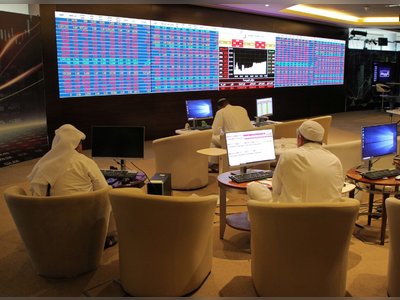
Global Economic Outlook Adjusts Amidst Rising Inflation Rates
Inflation pressures prompt revised forecasts from financial institutions globally, with varied impacts across regions.
Global inflation rates have experienced a notable uptick, prompting financial institutions to adjust their economic forecasts for multiple regions.
In the United States, the inflation rate has surged to 8.6% as of May 2023, marking its highest level since 1981. The Federal Reserve has responded by implementing aggressive interest rate hikes, including a 0.75 percentage point increase in June and another substantial raise in July, with the intention of curbing inflation while managing potential impacts on economic growth.
Meanwhile, in Europe, the Eurozone has seen inflation reach 7.5% in May 2023, driven by rising energy costs and supply chain disruptions stemming from the ongoing conflict in Ukraine.
The European Central Bank is also expected to raise interest rates in the coming months as officials seek to address mounting price pressures.
Analysts have signaled that the conflict has exacerbated existing supply chain issues, contributing to widespread increases in commodity prices.
In Asia, inflationary trends vary significantly between countries.
Japan, facing decades of low inflation, reported a rate of 2.5% in June 2023, prompting discussions on the Bank of Japan's longstanding monetary policy.
In contrast, countries like India and Indonesia have faced sharper inflation increases, with rates hitting 6.3% and 4.4% respectively, leading policymakers to consider tightening measures.
Emerging markets are particularly vulnerable to inflation-related shocks due to their reliance on imported goods and commodities.
Economies in Latin America, such as Argentina and Brazil, are grappling with inflation rates exceeding 60%, prompting urgent measures from local governments to stabilize currencies and control food prices.
Forecasts from major financial organizations indicate potential slowdowns in global growth as central banks respond to inflation.
The International Monetary Fund has revised its global growth projections downwards from 4.4% to 3.6% for 2023, reflecting concerns about tightening monetary policies and their implications for consumer spending and investment.
Additionally, the Organisation for Economic Co-operation and Development has highlighted the risk of stagflation—a combination of rising inflation and stagnant growth—particularly in advanced economies.
Increased costs of living, fueled by high energy prices and supply chain challenges, pose risks to economic recovery following the impacts of the COVID-19 pandemic.
Markets across the globe react to these developments, with stock indices showing volatility amid adjustments to growth forecasts and investor sentiment pivoting towards caution.
Commodity markets have also faced fluctuations, with oil prices reaching multi-year highs, driven by both geopolitical tensions and recovering global demand post-pandemic.
As economic conditions evolve, central banks face the challenge of navigating the delicate balance between fostering growth and controlling inflation, with many observers closely monitoring the effectiveness of their strategies in the coming months.
In the United States, the inflation rate has surged to 8.6% as of May 2023, marking its highest level since 1981. The Federal Reserve has responded by implementing aggressive interest rate hikes, including a 0.75 percentage point increase in June and another substantial raise in July, with the intention of curbing inflation while managing potential impacts on economic growth.
Meanwhile, in Europe, the Eurozone has seen inflation reach 7.5% in May 2023, driven by rising energy costs and supply chain disruptions stemming from the ongoing conflict in Ukraine.
The European Central Bank is also expected to raise interest rates in the coming months as officials seek to address mounting price pressures.
Analysts have signaled that the conflict has exacerbated existing supply chain issues, contributing to widespread increases in commodity prices.
In Asia, inflationary trends vary significantly between countries.
Japan, facing decades of low inflation, reported a rate of 2.5% in June 2023, prompting discussions on the Bank of Japan's longstanding monetary policy.
In contrast, countries like India and Indonesia have faced sharper inflation increases, with rates hitting 6.3% and 4.4% respectively, leading policymakers to consider tightening measures.
Emerging markets are particularly vulnerable to inflation-related shocks due to their reliance on imported goods and commodities.
Economies in Latin America, such as Argentina and Brazil, are grappling with inflation rates exceeding 60%, prompting urgent measures from local governments to stabilize currencies and control food prices.
Forecasts from major financial organizations indicate potential slowdowns in global growth as central banks respond to inflation.
The International Monetary Fund has revised its global growth projections downwards from 4.4% to 3.6% for 2023, reflecting concerns about tightening monetary policies and their implications for consumer spending and investment.
Additionally, the Organisation for Economic Co-operation and Development has highlighted the risk of stagflation—a combination of rising inflation and stagnant growth—particularly in advanced economies.
Increased costs of living, fueled by high energy prices and supply chain challenges, pose risks to economic recovery following the impacts of the COVID-19 pandemic.
Markets across the globe react to these developments, with stock indices showing volatility amid adjustments to growth forecasts and investor sentiment pivoting towards caution.
Commodity markets have also faced fluctuations, with oil prices reaching multi-year highs, driven by both geopolitical tensions and recovering global demand post-pandemic.
As economic conditions evolve, central banks face the challenge of navigating the delicate balance between fostering growth and controlling inflation, with many observers closely monitoring the effectiveness of their strategies in the coming months.











